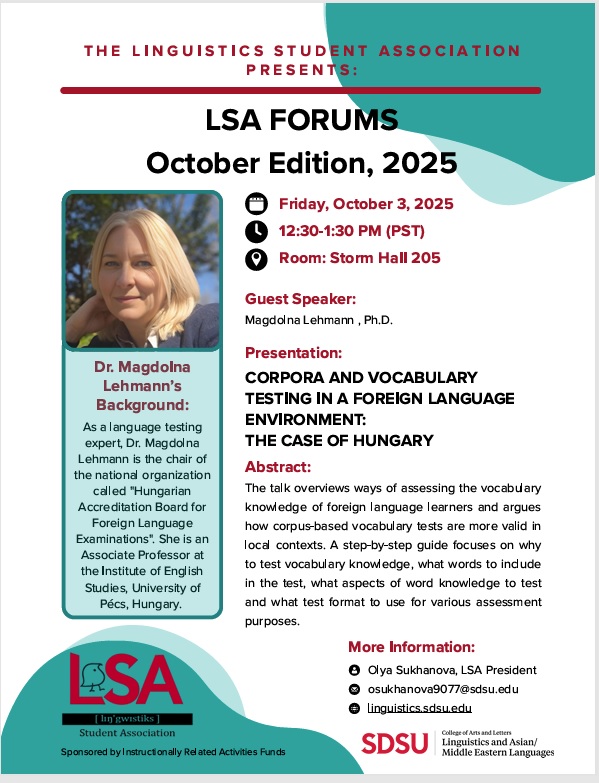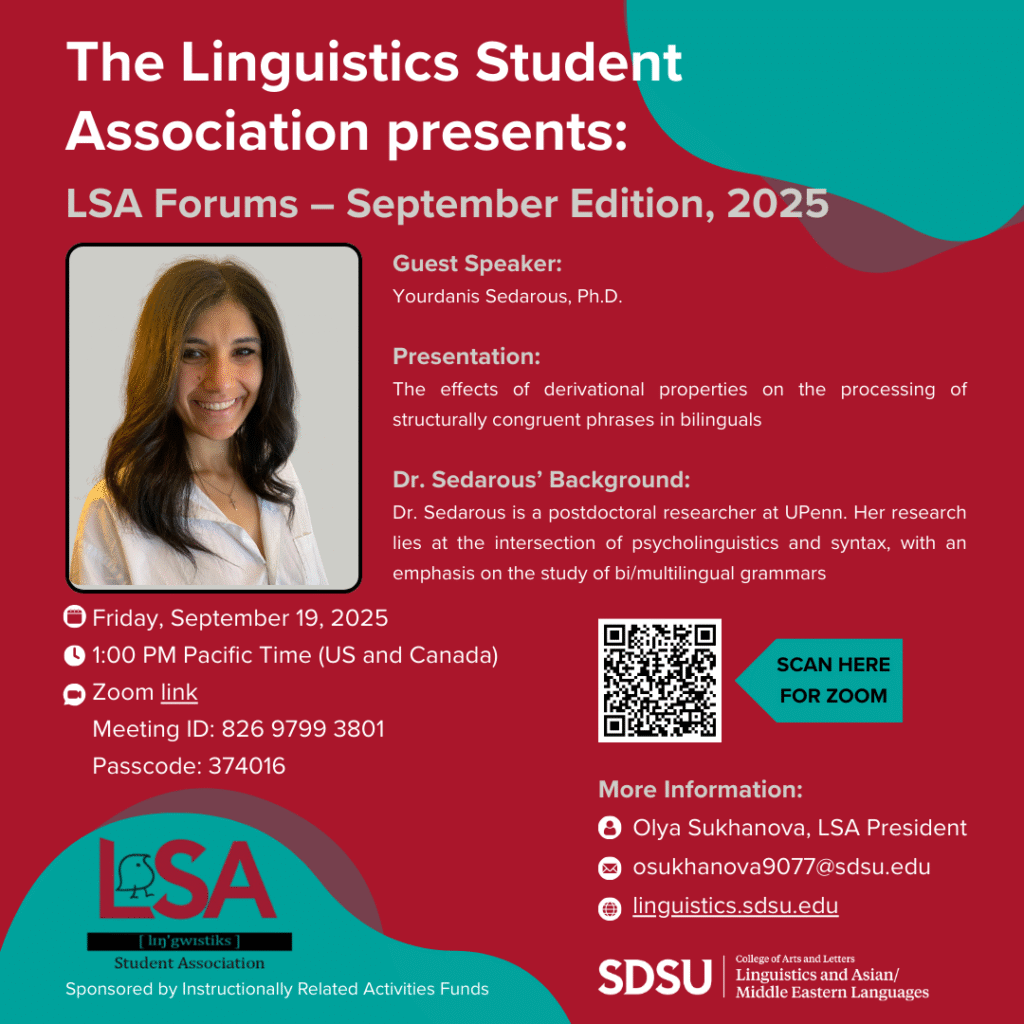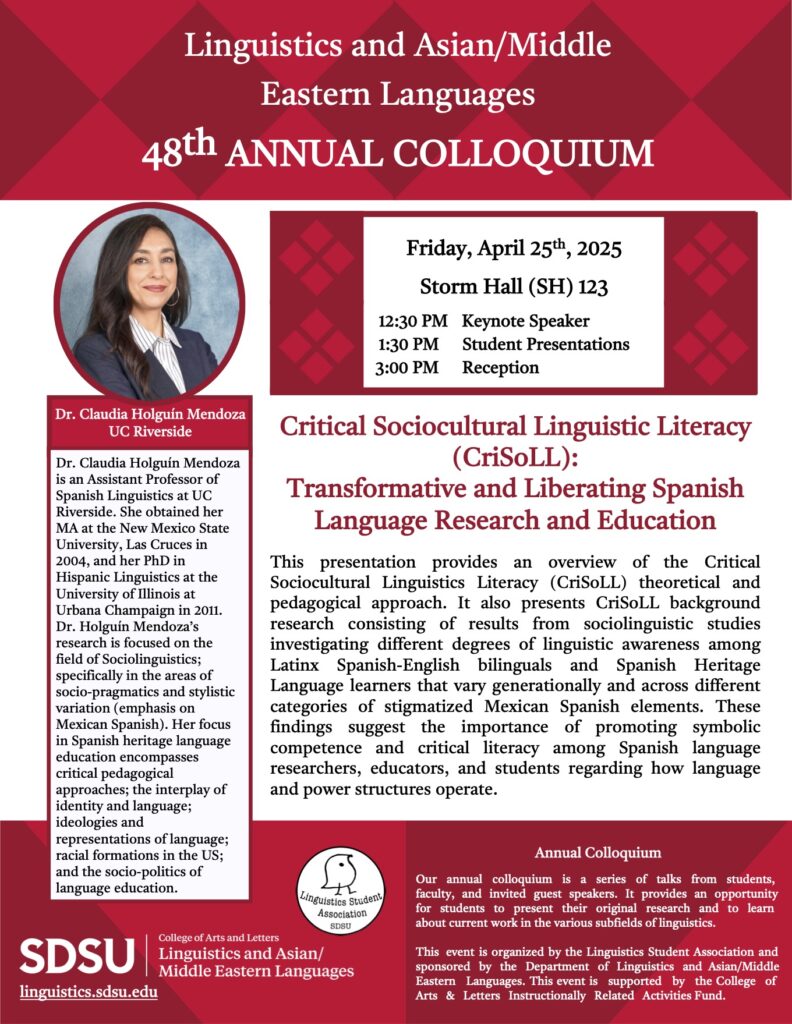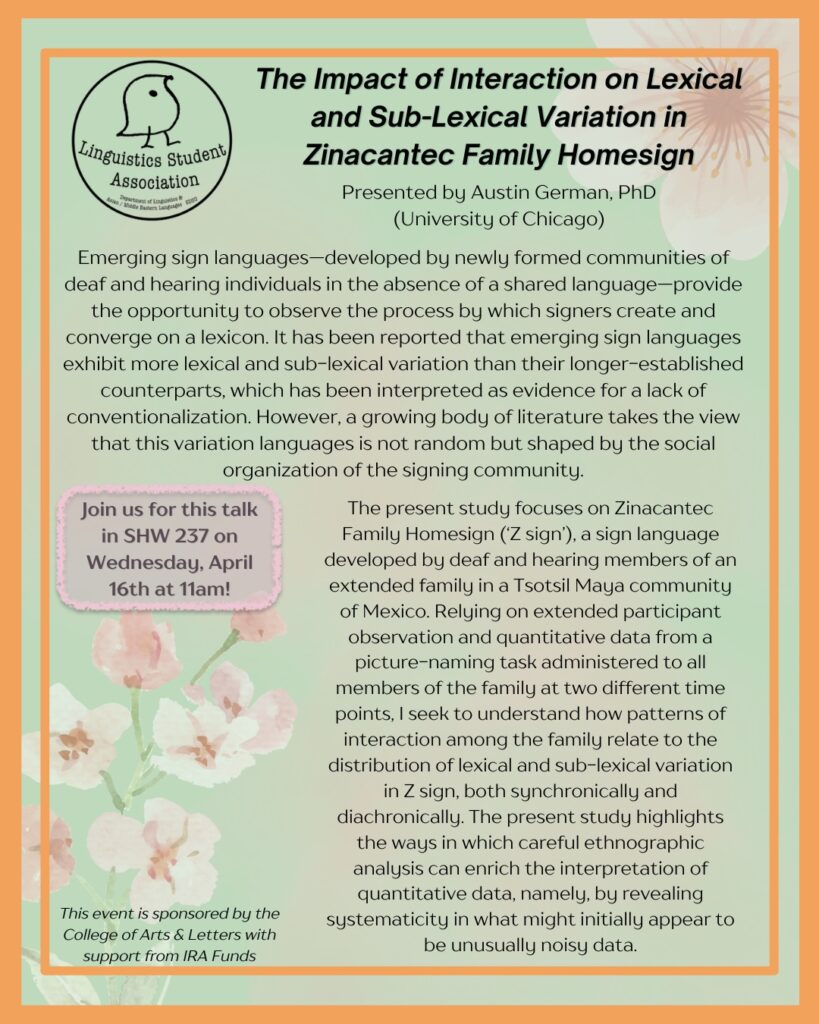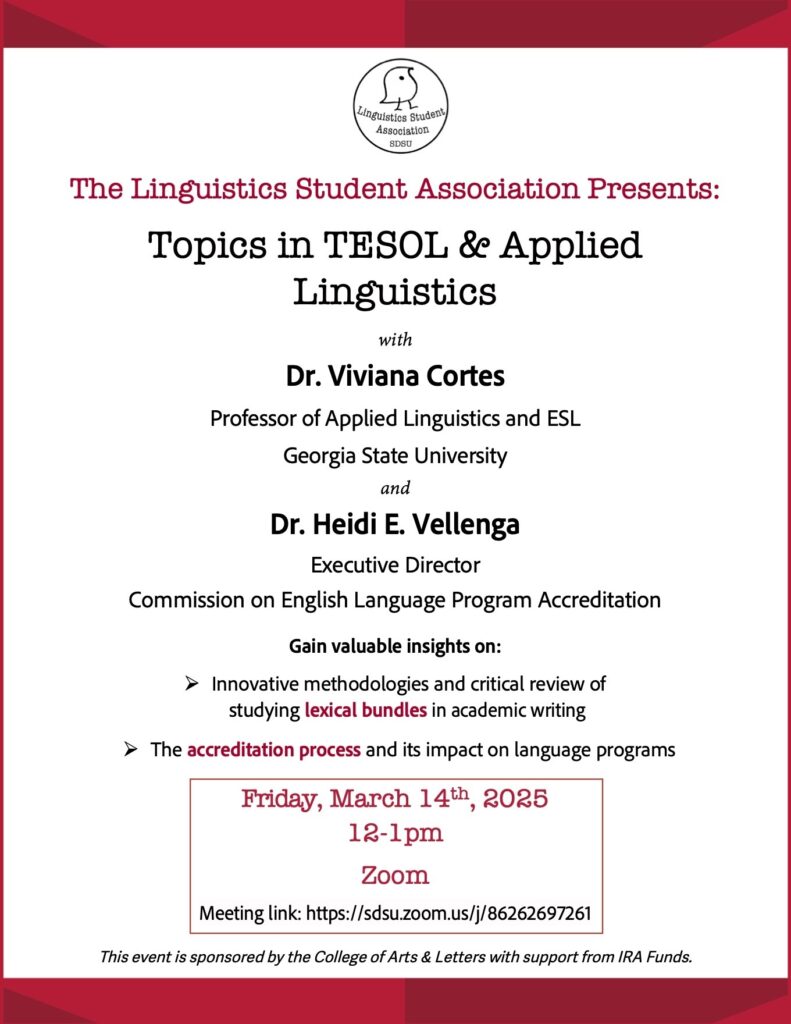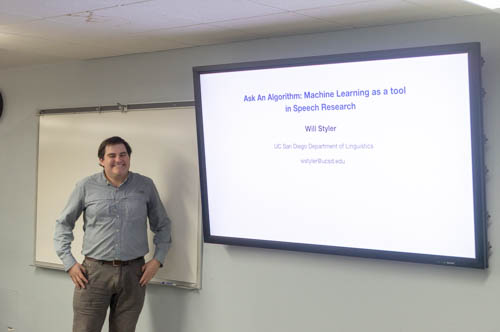Figure and Ground in language and cognition: Evidence from German and Korean
Dr. Soonja Choi
Department of Linguistics
University of Vienna
and
Department of Linguistics and Asian/Middle Eastern Languages
San Diego State University
11:00am-12:00pm
March 20, 2019
SH 109
Abstract
Regardless of culture and language, we routinely talk about the events we experience and make efforts to be clear and efficient in our communication (Grice 1975). This is true of one of the most frequent event types, motion events (Talmy 1978) having to do with movement of objects, such as putting cup on table. In these events, the moving object (e.g., cup) is the Figure and the reference object (e.g., table) is the Ground. The two entities have distinct perceptual properties and assume conceptually asymmetric roles: Figure(F) is the entity moving along a trajectory (e.g., onto, into) whereas Ground(G) serves to be the non-moving reference frame.
Comparing between German and Korean speakers, I present variation in linguistic description and cognitive behaviors for motion events. In particular, I examine (i) the degrees to which German and Korean speakers differentiate between F and G semantically (spatial terms) and syntactically (grammatical roles: subject, object) and (ii) their eye-gaze and memory patterns of F and G. In the linguistic study, participants described dynamic video events involving two objects that systematically switched their F-G roles (e.g., put cup(F) on table(G) and put table(F) under cup(G)). German speakers used distinct spatial terms (e.g., auf ‘on’, unter ‘under’) for opposing F-G relations, thus encoding the F-G asymmetry. In contrast, Korean speakers frequently used the same terms (e.g., kkita ‘fit.tightly’) and the same syntactic constructions regardless of the switches in F-G roles. These crosslinguistic differences were more evident for Non-typical events (put table under cup) than for Typical events (put cup on table), showing that linguistic encoding interacts with degree of familiarity of these events in the real world. The differences also reflect language-specific spatial semantics and differences in the way the two languages perspectivize/contextualize the Figure-Ground relation.
German and Korean speakers also differed in perceptual/cognitive behaviors: German speakers looked longer at the Figure particularly in Non-typical events (compared to Typical events), but Korean speakers showed no such difference. In the memory test, German speakers were better than Korean speakers in remembering which object moved, i.e., the Figure. I relate these behavioral differences between German and Korean speakers to their differences in linguistic representation of Figure and Ground.
References:
Choi, S., Goller, F., Hong, U., Ansorge, U., and Yun, H. (in press). Figure and Ground in spatial language: Evidence from German and Korean. Language and Cognition.
Grice, P. (1975). Syntax and semantics.
Talmy, L. (1978). Figure and ground in complex sentences. In J. Greenberg, C. Ferguson, & E. Moravcsik (Eds.), Universals of human language (pp. 627–649). Stanford Univ. Press.
Thiering, M. (2015). Spatial semiotics and spatial mental models: Figure-Ground asymmetries in languages. (Applications of Cognitive Linguistics). Berlin: Mouton de Gruyter.
This event is co-sponsored by the Dept of Linguistics and Asian/Middle Eastern Languages and the SDSU Linguistics Student Association, and is supported by the College of Arts & Letters Instructionally Related Activities Fund.
